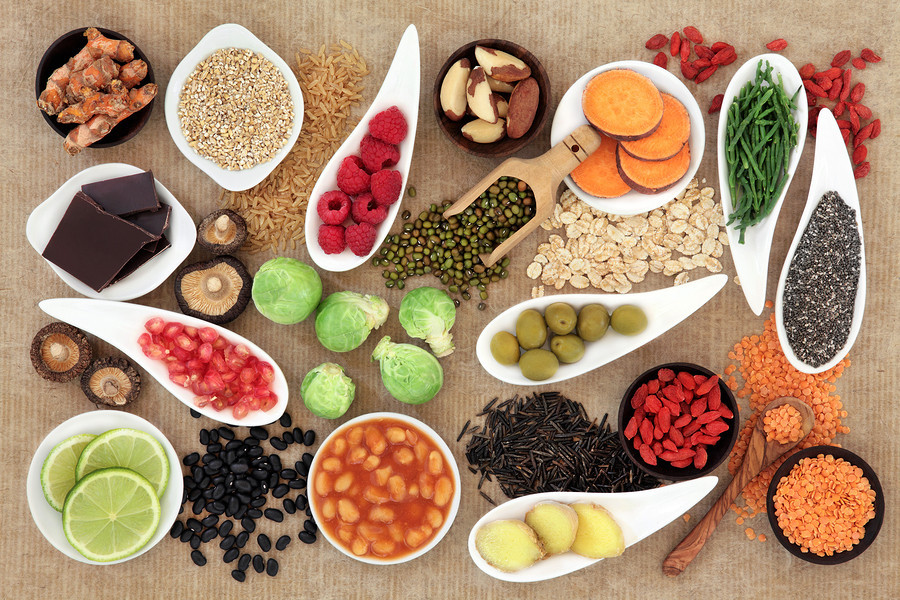10 Simple Ways to Make Your Meals Healthier Without Sacrificing Taste

Eating healthier doesn’t mean you have to give up on flavor. With a few simple changes, you can make your meals both nutritious and delicious. Here are 10 easy ways to transform your dishes into healthier versions without sacrificing taste.
- Swap Refined Carbs for Whole Grains
Refined carbohydrates, like white rice and pasta, are stripped of essential nutrients. Switch to whole grains such as brown rice, quinoa, or whole wheat pasta. They are packed with fiber, which helps with digestion and keeps you fuller for longer. The nutty flavor and hearty texture of whole grains add a satisfying depth to your meals. - Use Healthy Fats
Instead of reaching for butter or processed oils, opt for healthier fats like olive oil, avocado, or coconut oil. These fats provide essential nutrients, like omega-3s, and add richness to your dishes. Try drizzling olive oil over roasted vegetables or using avocado in your salads to bring a creamy texture without the added unhealthy fats. - Increase Vegetables in Every Meal
Adding more vegetables to your meals is one of the easiest ways to boost nutrition. You don’t have to overcomplicate things—simple changes like tossing spinach into your morning omelet or adding zucchini to your pasta can make a big difference. The natural sweetness and variety of flavors in vegetables can also make your meals more exciting. - Incorporate Herbs and Spices
Herbs and spices not only enhance the flavor of your food, but they also bring plenty of health benefits. Fresh basil, cilantro, or parsley can make a salad pop, while spices like turmeric, cumin, and paprika add depth to soups, stews, and curries. Experiment with different flavors to create meals that are bursting with taste and rich in antioxidants. - Cut Down on Added Sugars
Many recipes call for added sugars, but they can lead to excess calories and an energy crash. Instead of adding sugar to your smoothies, baked goods, or drinks, try using natural sweeteners like honey, maple syrup, or stevia in moderation. For a naturally sweet touch, include fruits like bananas or berries in your dishes—they provide sweetness and fiber, which helps to keep you satisfied. - Choose Lean Proteins
Protein is essential for muscle repair and overall health, but some sources can be high in unhealthy fats. Opt for lean protein sources like chicken breast, turkey, fish, or plant-based options such as lentils, tofu, and chickpeas. These choices provide the protein you need without the added fat and calories that come with fattier meats. - Try Baking or Grilling Instead of Frying
Frying can add unnecessary calories and unhealthy fats to your meals. Instead, try baking, grilling, or roasting your food. These methods not only reduce the amount of oil you need but also enhance the natural flavors of your ingredients. For example, baked sweet potato fries are a healthier alternative to traditional deep-fried fries, with just as much flavor and crunch. - Opt for Low-Fat Dairy or Non-Dairy Alternatives
If dairy is part of your diet, choose low-fat versions like skim milk, reduced-fat cheese, or yogurt. Alternatively, try non-dairy options such as almond, soy, or oat milk. These options can still provide a creamy texture to your dishes without the saturated fat found in full-fat dairy products. Non-dairy milks often come fortified with calcium and vitamin D, offering additional nutritional benefits. - Limit Processed Meats
Processed meats like bacon, sausages, and deli meats are often high in sodium, preservatives, and unhealthy fats. To make your meals healthier, try substituting these with lean, fresh cuts of meat or plant-based protein sources. If you’re craving something with a similar taste, try smoked turkey or chicken as a leaner alternative to traditional bacon. - Control Portion Sizes
Sometimes, the key to making your meals healthier is simply controlling the portions. Eating too much, even of healthy foods, can still lead to weight gain. Focus on balanced portions by using smaller plates, measuring servings, and listening to your body’s hunger cues. Eating mindfully allows you to enjoy the flavors of your meal while avoiding overeating.

